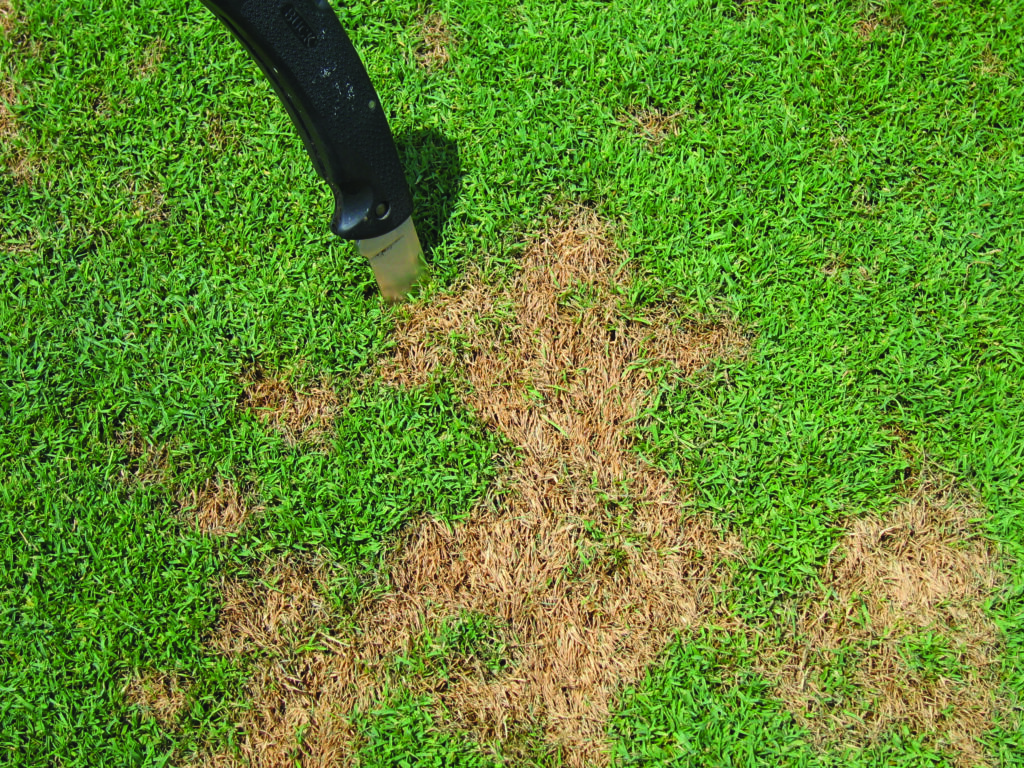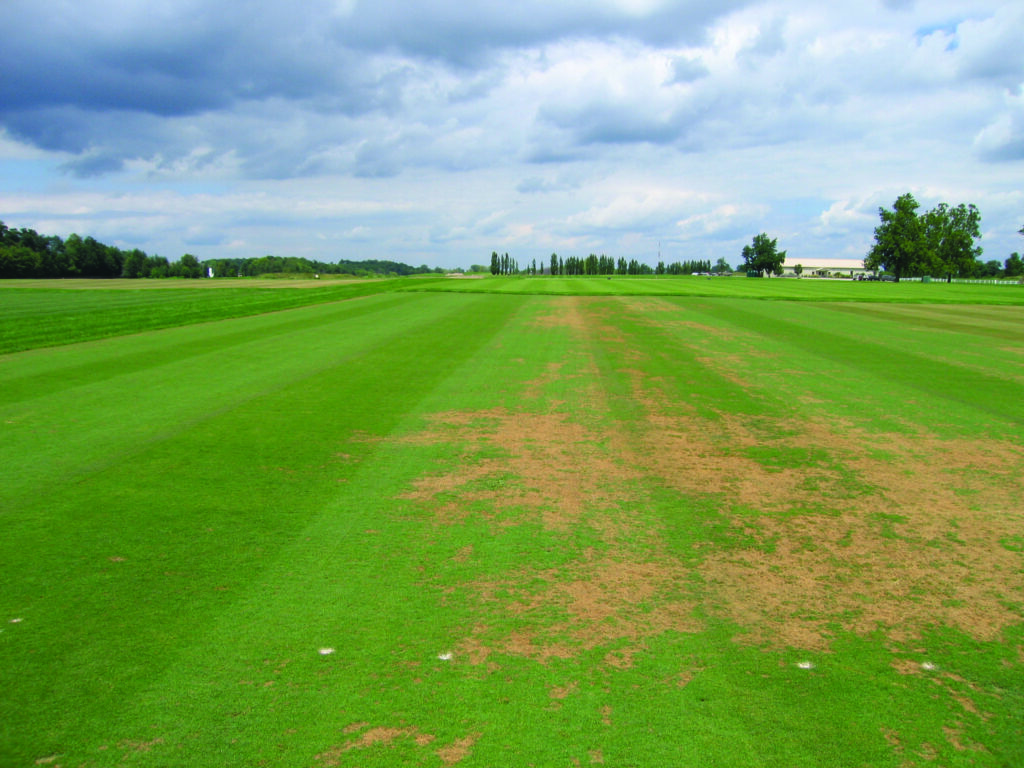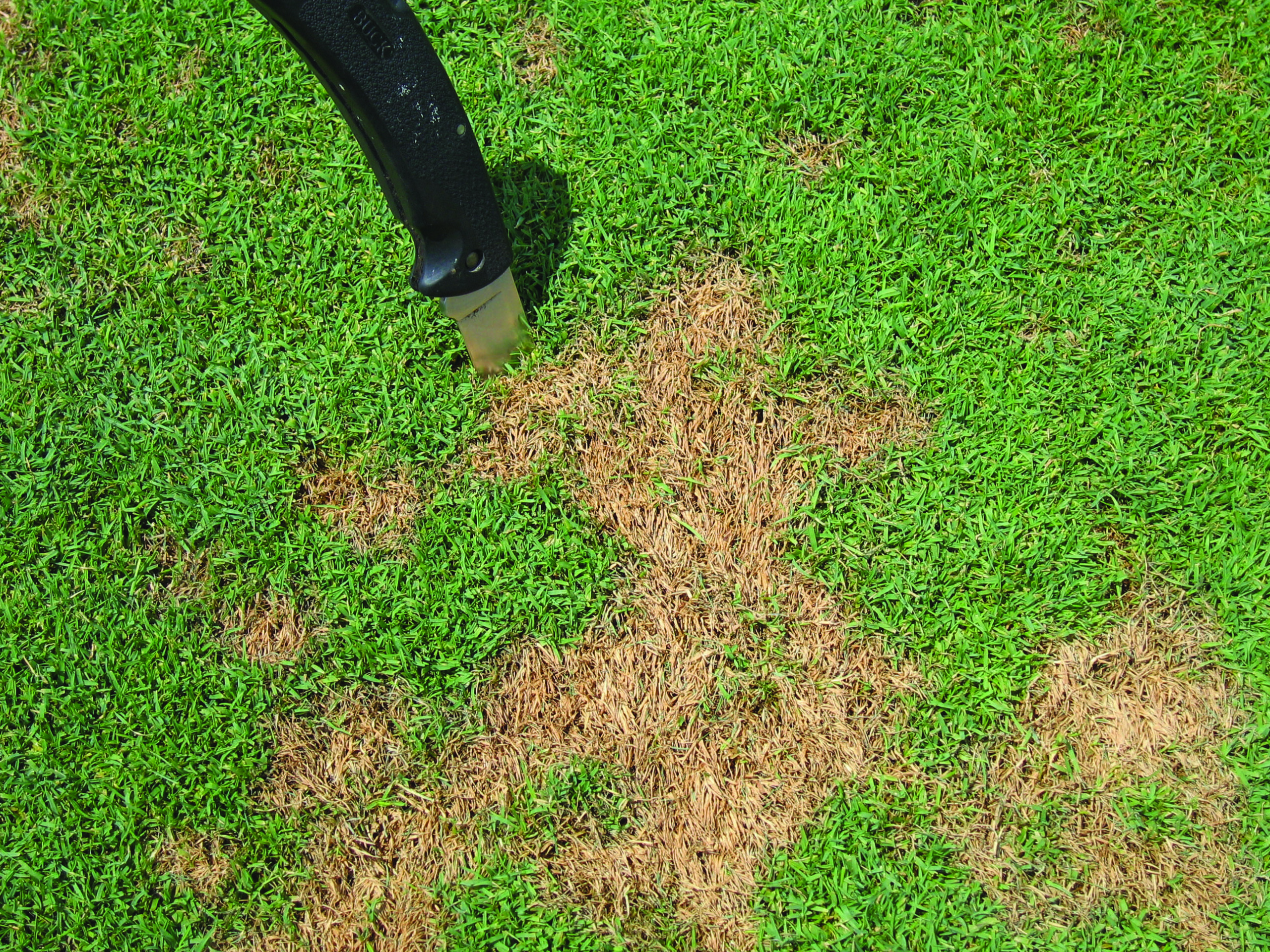Pythium blight outbreaks are especially damaging to creeping bentgrass, annual bluegrass, rough bluegrass, and perennial ryegrass. The Pythium fungus can infect Kentucky bluegrass and tall fescue, but disease development is limited and turf is rarely damaged. Among turfgrass diseases, Pythium blight receives considerable attention because it spreads very quickly, affects leaves and crowns, and kills plants, resulting in extensive loss of the turf stand.
Pythium blight occurs during the most uncomfortable days of summer when dew periods are long (greater than 14 hours) and evening temperatures average 68°F or higher. Outbreaks often are first observed in low areas or swales, where more soil moisture is maintained and dew begins to form early in the evening and remains through the morning. Late afternoon rain during these hot, humid periods further favor disease development and may be responsible for the rapid spread of the pathogen. Turf with lush growth and excessive nitrogen fertility is especially vulnerable to infection.

The hot, humid weather should signal an alert for Pythium blight outbreaks. Initial symptoms include small, circular patches of collapsed, water-soaked leaves and stems on close-mown turf (Figure 1). If observed early in the morning, infected plants may have cottony white mycelium. Infected turf dies and becomes matted (Figure 2). If disease favorable conditions persist and no efforts are made to interfere with disease progression, large areas of turf may be killed within a matter of days. (Figure 3).
The Pythium fungus overwinters in soil and plant debris. Its spread is associated with water movement. When run-off drains through symptomatic turf, the surface water can transport spores. Also, the fungus is readily spread by equipment after affected areas are mowed while wet.

Disease Control Cultural Control Options
Varieties of creeping bentgrass and perennial ryegrass appear to be equally susceptible to Pythium blight infection. Other species are somewhat less susceptible but varietal differences within species have not been identified, and they may not be suitable replacements for susceptible species. Modifying the environment may help reduce the severity of Pythium blight. Water management and proper drainage to avoid waterlogged root zones during summer are especially important. Selective pruning of trees and shrubs and using fans will help circulate air and dry turfgrass surfaces, effectively limiting the duration of the dew period. Avoiding conditions that approach excessive nitrogen fertility during midsummer will reduce vulnerability to Pythium outbreaks.
Because of the pathogen’s survival and spread characteristics, Pythium outbreaks normally occur in the same “problem” areas each year as extreme weather conditions prevail. Delay mowing in those areas until surfaces are dry. Precautionary spot treatment with fungicides in those areas is advisable (see below).
Fungicides for Disease Control
Because of the speed of disease establishment and spread, and the consequences of Pythium infection (turf death), fungicides represent essential tools for Pythium blight control. Golf course superintendents who have experienced the effects of Pythium blight epidemics have learned to apply fungicide with the arrival of extreme summer weather. Depending on the history of the disease on certain golf courses, they may spray fairways as well as greens and tees or may spot spray areas that seem particularly vulnerable to Pythium blight. If hot, humid weather persists, then repeated applications may be warranted.
It is important to accurately identify Pythium blight because the fungicides that are effective against this disease will not control other diseases (except yellow tuft). Therefore, distinguishing between Pythium blight and other diseases that may occur during the heat of summer (anthracnose, brown patch, dollar spot, gray leaf spot, and summer patch) is especially important. Mefenoxam (Subdue Maxx ®) and propamocarb (Banol®) are time-tested materials that have proven to be very effective against Pythium blight. Cyazofamid (Segway®) and fluopicolide (Stellar®) are new products that reportedly are also very effective. Phosphonate products, including fosetyl Al (Chipco Signature®), may be effective only when applied as a preventative and only when disease pressure is low to moderate.
Home Lawn Help
Pythium blight is a serious threat to perennial ryegrass lawns. Areas with restricted air movement are most vulnerable to infection. Control practices for residential lawns are based on avoiding excessive nitrogen fertility in midsummer, avoiding early evening irrigation, and improving air circulation to hasten drying of leaf surfaces. If extensive Pythium blight turf damage occurs annually, over-seeding or reseeding affected areas with Kentucky bluegrass or tall fescue is recommended. Fungicides should be considered as a last option. A professional lawn care service should be contracted for best results regarding product selection and timing of the application(s).
For other Turfgrass Disease Profiles, visit: www.agry.purdue.edu/

Dr. Rick Latin is a professor of plant pathology at Purdue University and the author of a new text entitled, “A Practical Guide to Turfgrass Fungicides”.
All photos by Richard Latin.





















